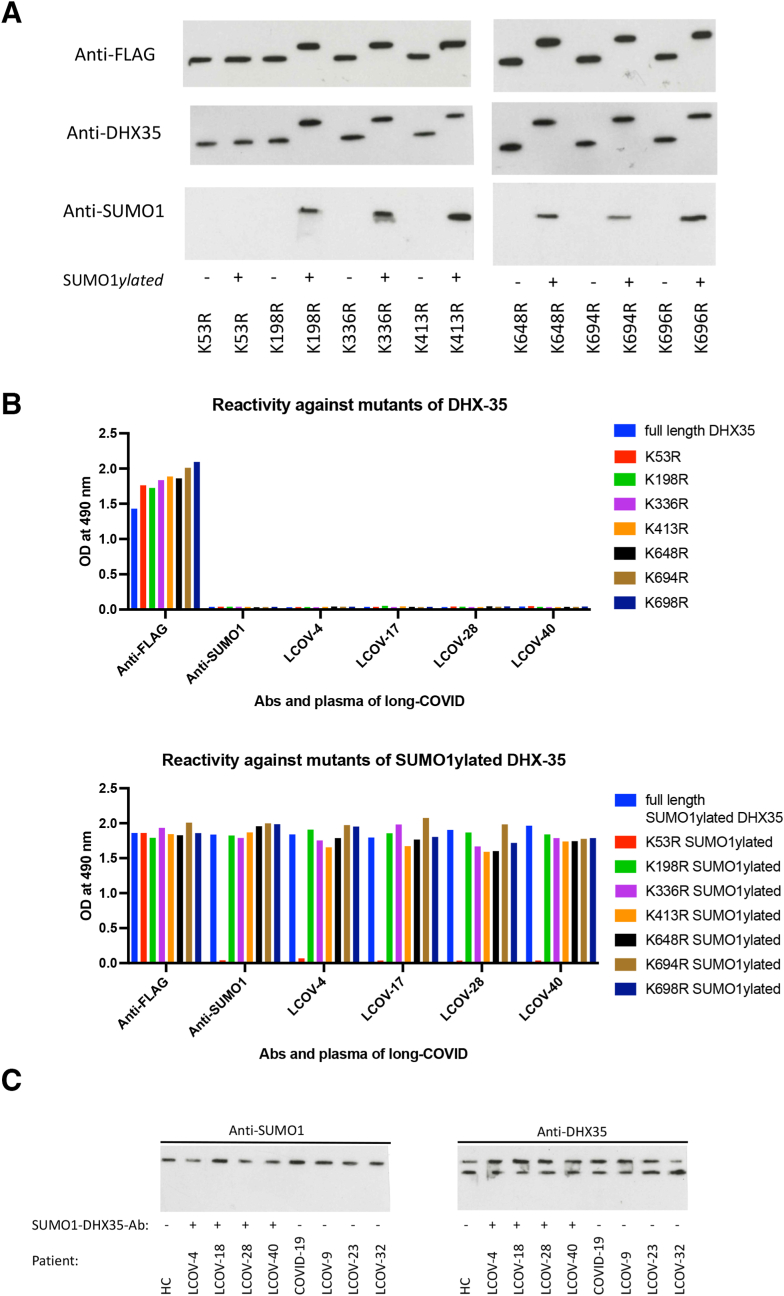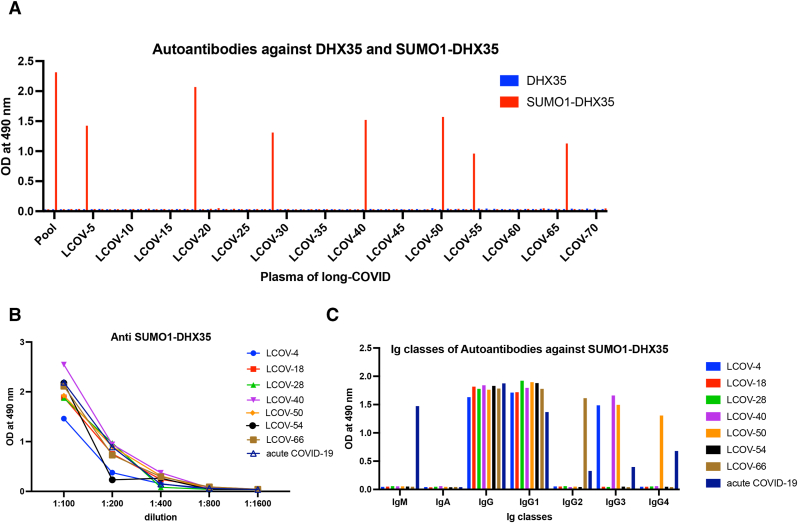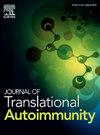Long COVID is a collection of symptoms as a late sequelae of SARS-CoV-2 infection. It often includes mental symptoms such as cognitive symptoms, persisting loss of smell and taste, in addition to exertional dyspnea. A role of various autoantibodies (autoAbs) has been postulated in long-COVID and is being further investigated. With the goal of identifying potentially unknown autoAbs, we screened plasma of patients with long COVID on in-house post-translationally modified protein macroarrays including citrullinated, SUMOylated and acetylated membranes. SUMO1ylated isoform DEAD/H (Asp-Glu-Ala-Asp/His) box helicase 35 (SUMO1-DHX35) was identified as only candidate antigen. In adult patients with long COVID, IgG autoAbs against SUMO1-DHX35 of IgG class were found in seven of 71 (9.8%) plasma samples, of IgM and IgG class in one of 69 (1.4%) samples, not in 200 healthy adult controls, not in 442 healthy children, and 146 children after SARS-CoV-2 infection. All autoAb-positive seven patients were female. AutoAb titers ranged between 200 to up to 400 By point mutagenesis and expression of FLAG-tagged mutants of DHX35 in HEK293 cells, and subsequent SUMOylation of purified constructs, lysine 53 was identified as a unique, never yet identified, SUMOylation site. The autoAbs had no reactivity against the non-SUMO1ylated mutant (K53R) of DHX35. To summarize, autoAbs against SUMO1-DHX35 were identified in adult female patients with long-COVID. Further studies are needed to verify the frequency of occurrence. The function of DHX35 has not yet been determined and there is no available information in relation to disease implication. The molecular mechanism causing the SUMOylation, the potential functional consequences of this post-translational modification on DHX35, and a potential pathogenicity of the autoAbs against SUMO1-DHX35 in COVID-19 and other possible contexts remain to be elucidated.




